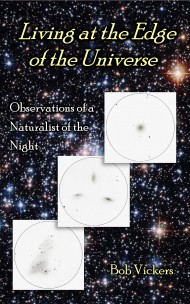Autumn into early winter is the busiest time of the year for me, so I have fallen behind on my posting. However, I have done some more observing of Galaxy Groups and Clusters during this time. This will be the first of three catch-up posts.
First, from way back in June 2014, is the Additional Group #36 AKA the NGC 5490 group. I could only see three of the nine or so listed galaxies. By far the brightest of the group is NGC 5490. At magnitude 12.1 it is a direct vision galaxy with a dim stellar nucleus.
Also from June is Trio #34 consisting of one bright direct vision galaxy and two other small quasi-stellar galaxies. One of the smaller galaxies, NGC 5615 is just to the NW of the center of the larger bright galaxy NGC 5614. I have included nearby NGC 5609 which is not part of the trio.
From July, I have Trio #38 which forms an elongated triangle about 7′ in length with one brighter galaxy (NGC 6120) and two dimmer ones.
Also from July is Hickson 82, a rough parallelogram of four faint galaxies within about a 5′ diameter. All are small and roundish faint fuzzies.
Last from July is Hickson 81. I could only spot two of the four listed galaxies and those two were at the extreme edge of visibility. Listed magnitudes for those I could just barely see are 16.3 and 16.5 while those I could not see are 17.1 and 17.2.
The last one for this update is from August 2014. It is Abell #37 (2147). There are many small dim galaxies in this cluster which I could not see but I could see three larger and brighter galaxies in a short chain just NW of a 9th magnitude star plus two other outliers to the S & E. Jim Shields, on the Adventures in Deep Space website, lists this cluster as having about the same red shift as the Hercules Cluster and therefore a similar distance of about 550 million light years!


